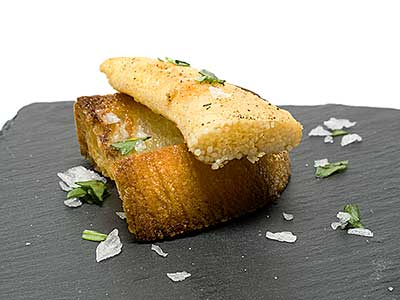June 3, 2013
Amuse-Bouche

œufs de hareng sur toast
(herring roe on toast)
Great swirling schools of herring converged in San Francisco Bay this month, drawing fishermen, sea lions, harbor seals, and thousands upon thousands of birds looking to fatten up for the winter.
The menagerie of wildlife is a sign that the bay’s once spectacular herring runs, which collapsed four years ago, are returning to their former glory. The San Francisco run is the last urban fishery in the United States in which people can actually sit on shore and watch commercial boats haul in the squiggling fish.
Thus began an article by Peter Fimrite in the San Francisco Chronicle on Thursday, January 24, 2013.
I think I’ve always loved herring. Pickled herring, without or without sour cream, was a part of many celebrations of my childhood. I still buy jars of the stuff when the price isn't too high.
Although I’ve looked in the past, I never found fresh, local herring in my usual markets during the season. Fishmongers told me that a small amount of the catch was saved for restaurants, but most of it went to Japan. The herring I used for my hareng mariné (pickled herring) amuse-bouche had been imported. But here I was at 99 Ranch Market in Mountain View buying a packet of eight, local, fresh herring. (I felt so good.)
Upon arriving home, I made preparations for fileting the fish. I normally work on an island in the center of the room, but for fish I work over at the edge of the room next to the sink. My plan was to scale, gut, and filet each fish before moving on to the next, and that’s what happened with the first two fish. The belly on the third fish felt a bit firm, so I decided to gut it before scaling. To my surprise, instead of finding a belly full of guts, I found two egg sacks. This fish was pregnant. Obviously, I’m not a herring expert.
This wasn’t my first adventure with pregnant fish. When I spent a week working at Marben Restaurant in Toronto, one of the tasks I was assigned was stripping the egg sacks from a case of pregnant spring trout. Those sacks were iced down, and then the eggs separated on large baking sheets. The eggs were combined with salt at the rate of two percent by weight and left to cure.
The herring eggs were much smaller, and the egg sacks were much firmer, then the trout eggs had been. I decided to set them aside in the refrigerator, and to decide how they would be served after I finished with filleting the remainder of the herring.
Later, I did a cursory search for herring roe recipes on the Internet, and wasn’t impressed with the variety I found. I did learn that male herring also produce a roe called a milt or soft roe, and that these are the male genitalia. Based on the pictures I found, these seem to be served more often than the female eggs. I had discarded them from the three male fish in my batch. I didn’t know what they were. Next time they won’t be wasted.
The recipes I found were either for main courses or used more ingredients than I comfortable with. In the end, I decided to keep things simple. I sprinkled the roe with fine salt and freshly ground black pepper, and fried them gently in butter. Each hot roe sack was cut into two pieces and placed on a crouton made by brushing a piece of crusty bread with olive oil and toasting it. A little sprinkle of minced flat-leaf parsley and salt flakes finished the presentation. A single serving used half of a roe sack.
I was tempted to decorate the herring roe toasts with caviar, but I decided against it. This turned out to be a flavor where simple is best.
© 2013 Peter Hertzmann. All rights reserved.
